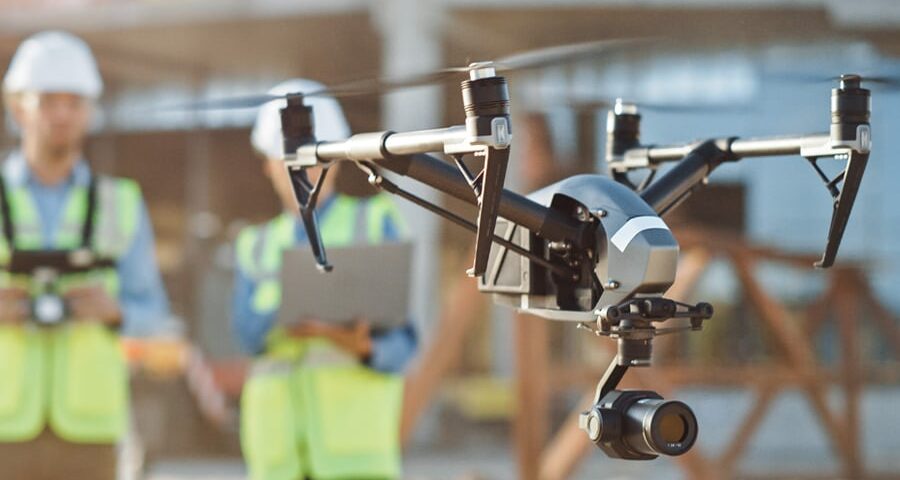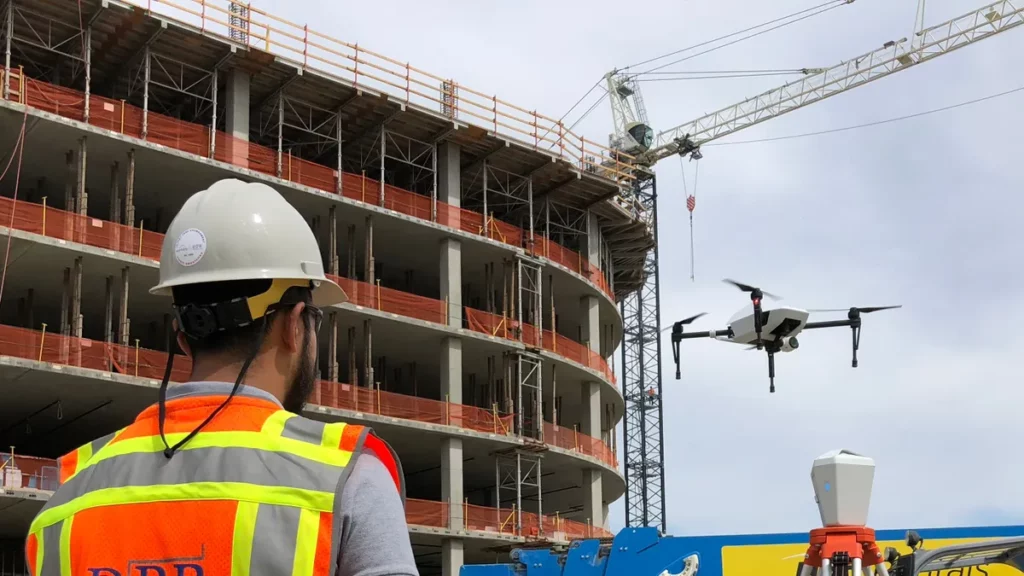
The construction industry has long-faced challenges such as project delays, cost overruns, safety hazards, and inefficiencies in data collection. Traditional surveying methods and manual inspections are often time-consuming and prone to human error. These issues not only increase expenses but also compromise worker safety and project accuracy.
In recent years, drone technology has emerged as a game-changer, offering faster, safer, and more cost-effective solutions for construction management. With the ability to capture high-resolution aerial imagery, monitor site progress in real time, and improve overall project efficiency, drones are transforming the way construction projects are planned and executed.
Benefits of Drones in Construction
Enhanced Efficiency and Productivity
One of the most significant advantages of using drones in construction is the ability to speed up data collection and processing. Traditional land surveying can take days or even weeks, whereas drones equipped with LiDAR or photogrammetry software can complete the same task within hours.
Improved Safety Measures
Construction sites are inherently dangerous, with workers often exposed to risks such as falls, hazardous materials, and unstable structures. Drones can minimize human exposure by conducting inspections in hard-to-reach or high-risk areas.
Cost Reduction
By reducing manual labor requirements and enhancing site monitoring, drones help cut costs significantly. They provide real-time updates, helping teams identify issues before they become costly problems. Additionally, automated aerial mapping and inspections save on expenses related to scaffolding, ladders, and cranes used for traditional site assessments.
Accurate Data and Improved Decision-Making
Drones offer high-resolution imaging, thermal scanning, and 3D mapping capabilities, providing construction teams with precise measurements and valuable insights. This data helps improve project planning and ensures better alignment between actual site conditions and architectural blueprints.
Applications of Drones in Construction
Site Surveying and Mapping
Drones equipped with LiDAR or photogrammetry software can create detailed topographical maps and 3D models of construction sites. This information is crucial for site planning, excavation work, and structural assessments.

Progress Monitoring
Project managers can use drones for regular site inspections, tracking progress without needing to be physically present. Drones capture before-and-after images, helping teams compare progress against project timelines and adjust schedules accordingly.
Equipment and Material Tracking
Construction sites often deal with scattered materials and expensive machinery. Drones can assist in inventory management by monitoring material stockpiles, tracking equipment locations, and ensuring that tools are used efficiently.
Safety Inspections
Drones allow safety managers to assess high-risk zones, unstable structures, and hazardous areas without requiring direct human involvement. This reduces workplace accidents and ensures compliance with safety regulations.
Implementing Drones in Construction Projects
Regulatory Considerations
Before deploying drones, construction firms must comply with local aviation laws and regulations. This includes obtaining licenses, following no-fly zone restrictions, and adhering to privacy laws regarding aerial surveillance.

Training and Skill Development
Successful drone integration requires trained personnel who understand drone flight operations, data analysis, and software applications. Many companies now offer certification programs to equip employees with the necessary skills.
Choosing the Right Equipment
Not all drones are suitable for construction projects. Companies must select drones with features that match their specific needs, such as high-resolution cameras, LiDAR sensors, thermal imaging, and long battery life.
Challenges and Considerations
Privacy and Security Concerns
Using drones in construction raises concerns about data privacy and security. Construction firms must ensure that sensitive information is protected and that drone flights do not infringe on private properties.
Technical Limitations
Despite their advantages, drones have limitations, such as battery life constraints, weather dependency, and regulatory restrictions. Strong winds, heavy rain, or extreme temperatures can affect drone performance, requiring careful planning.
Future Trends
Integration with Other Technologies
Drones are increasingly being integrated with AI, machine learning, and the Internet of Things (IoT) to enhance automation and data analytics. AI-powered drones can detect structural weaknesses, analyze material conditions, and even predict potential failures before they occur.
Advancements in Drone Capabilities
Future drones will feature longer battery life, improved obstacle-avoidance technology, and enhanced data processing capabilities. Additionally, the use of drone swarms—multiple drones working together on different tasks—will further improve construction site efficiency.
Conclusion
Drones are no longer a futuristic concept in construction—they are a practical, cost-effective, and highly valuable tool for modern project management. With benefits such as faster data collection, improved safety, lower costs, and precise site monitoring, drones are reshaping the industry.
As technology continues to evolve, their role will expand even further, integrating with AI and IoT to create smart construction sites that are safer, more efficient, and more sustainable. For construction companies looking to stay ahead of the competition, adopting drone technology is not just an option—it's a necessity.

